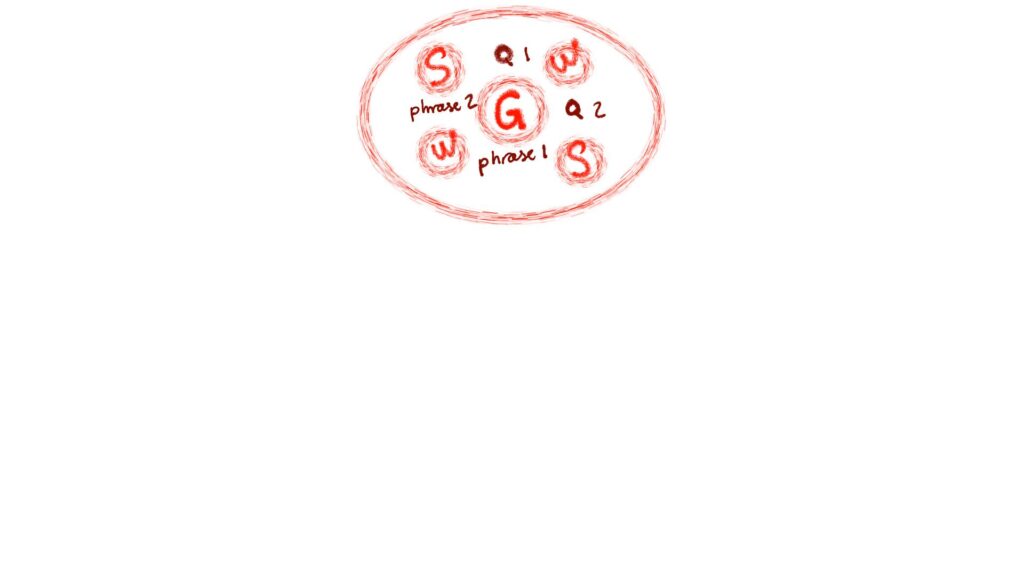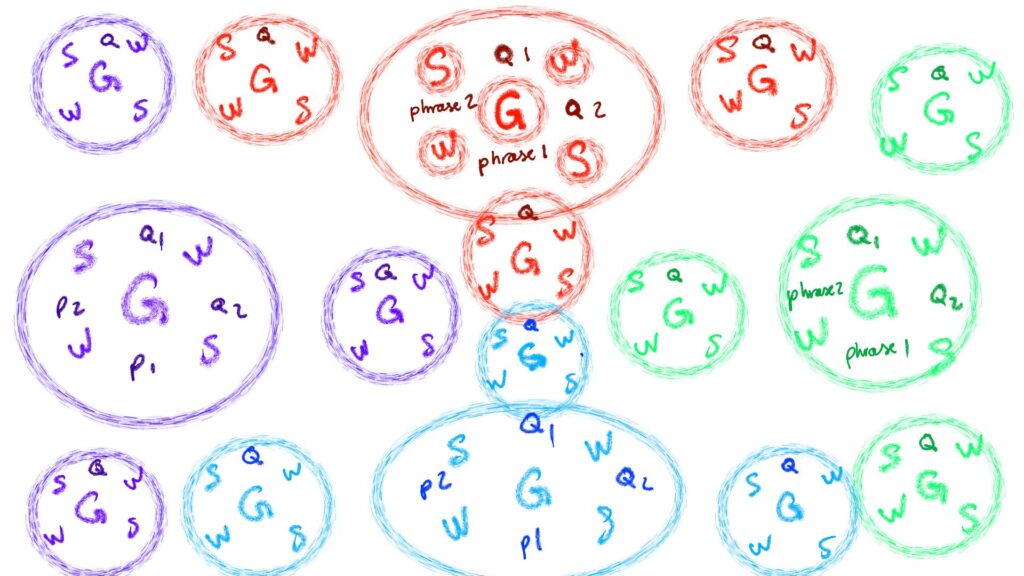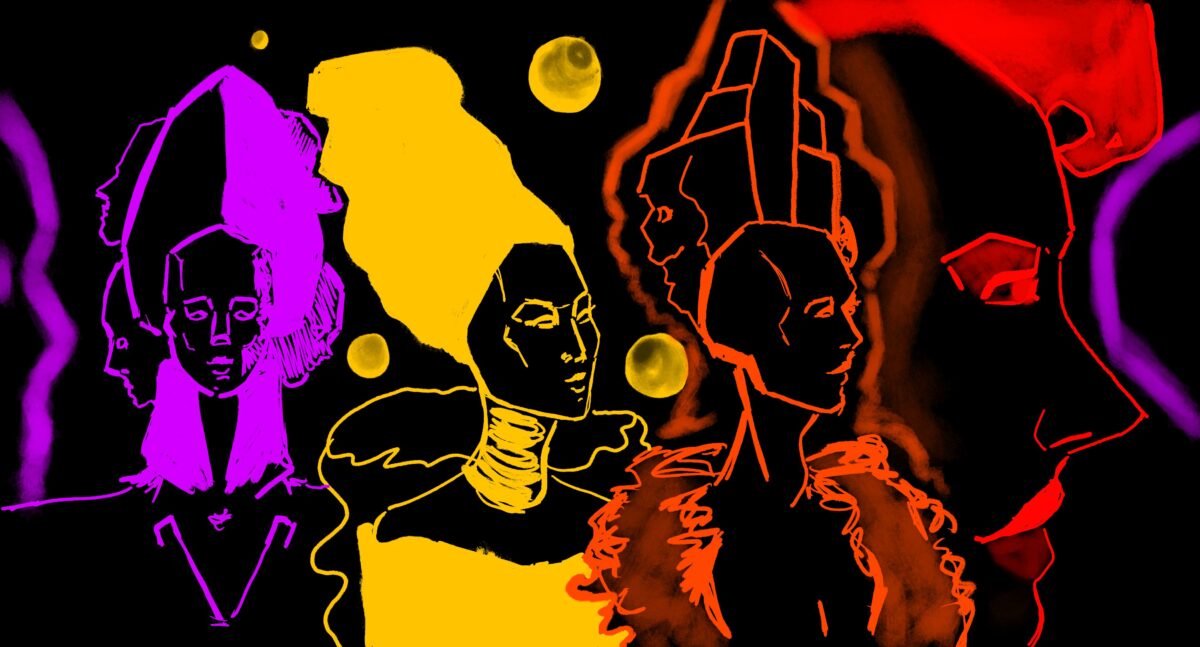- What do you need to be able to Improvise any Story?
- A set of Characters.
- A World.
- A set of Stories.
- How do you design them?
- Here’s how.
Summary – The Toolbox’s content
- 6 to 12 Main Characters
- A Relationship Map
- 3 to 6 Main Environments
- A World Map
- A Set of 8 Story types
- A Set of 6 Item types
- The Following article is written as a Standalone.
- This Sole article is enough for you to Start writing Stories.
- You can later expand from it with the linked articles.
- As well as the Articles in the Essentials category.
Characters
- 6 to 12 Characters
- It’s the ideal number to provide a Balance between Diversity & Consistency.
- The Story gets better as the Ideal number of Character is reached.
- Generally, a 1-shot will benefit from a limited number of Character.
- This allows you to focus on the Action & develop relationships more Easily.
- Whereas, Series will benefit from a large amount of Character.
- This allows you to focus on the Adventure dimension & develop relationships more Deeply.
- Roles
- Create a Relationships’ Map.
- Take a sheet of paper horizontally.
- Separate it in 4 equal parts.
- For Each part a different Color.
- Place your 1st Character in the middle of the 1st part.
- With her Goal in the Center, and her Behavior traits & Quirks around.

- Repeat for every other Character to reach a total of 12.

- Identity
- You need 6 Elements to define a Character’s Identity.
- Name.
- Origins – Place of Birth, Relatives & Daily Life.
- Goal – Main Objective, drives the Main Storyline.
- Passion – An activity non essential to the Main Storyline which provides pleasure to the Character.
- Quirks – Hairstyle, Accessories, Icon.
- Behavior – Individual Strengths & Weaknesses.
- Strengths & Weakness specific to the Character, not defined by her Role.
| Role | Trait 1 | Trait 2 | Trait 3 | Name | Goal | Passion | Quirk | Individual Strength | Individual Weakness |
|---|---|---|---|---|---|---|---|---|---|
| Enticer | Entertaining | Confident | Generous | ||||||
| Manager | Empathetic | Individualist | Providing | ||||||
| Strategist | Competitive | Curious | Learning/Sharing | ||||||
| Reliable | Assertive | Relentless | Protective | ||||||
| Advisor | Pondering | Temperate | Self-Aware | ||||||
| Exemplar | Dedicated | Participative | Leading |
If you want to know more about Roles & Relationships.
Environments
- 3 to 6 Environments
- Define up to 6 essential Environments.
- Display Individuality.
- Make your Worlds as Unique as possible.
- Define a Core Theme for each World.
- They will often fall under 1 of the following Categories:
- Administration
- Finance & Trade
- Safety & Housing
- Food & Health
- Innovation & Urban Development
- Transportation & Energy
- For each of them indicate why they are Essential by defining their:
- Name
- Origin
- Resources
- Public & Customers
- Administrator & Personnel
- Even if this classification appears to be reserved for Urban Environments it can easily be adapted to Natural Environments.
- Just consider 2 questions:
- What are the Resources necessary?
- Where can they be found, in the most efficient way?
- A Small Map of your World
- Create up to 6 Zones.
- Use Clear, Simple, Contrasting & Complementary Shapes.
- Draw large Blocks.
- And then cut smaller, more refined shapes in them.
- Here’s an Example.

- You will need some time to develop your Map.
- Let your world unfold.
- Don’t hesitate to redraw it.
- Diversity & Atmosphere
- Make use of the Atmosphere to enhance your World’s Diversity.
- Environments should be there to support Interactions.
- Interactions & Encounters make the Story memorable.
- The allow you to develop the Relationships between your Characters.
- As well as the Relationships between the Characters & the Environment.
- This Development is progressive.
- Let it unfold.
- It will unfold through the Characters Reactions.
- Characters will develop Affinities for the Environments.
| Function | Name | Creator | Origin | Resources | Public & Customers | Administrator | Personnel | Perception |
| Administration | ||||||||
| Finance & Trade | ||||||||
| Safety & Housing | ||||||||
| Food & Health | ||||||||
| Innovation | ||||||||
| Transportation & Energy |
If you want to know more about diverse Environment.
Stories
- 8 Types of Stories
- Make use of these 8 Types to Display Individuality.
- Make your Story as Unique as possible.
- Define a Core Theme for each Story & sub-Story.
- Altering between these 8 different types of Stories will provide a satisfying Structure.
- Alternating allows you to create Surprise more easily without sacrificing the Structure.
- How to create a Story fast?
- Define the Story type.
- Refine the Characters’ Goal.
- Choose a Genre & a Frame.
- Combine them to create a Context.
- Define:
- the Stakes,
- the Issue,
- the mean of Resolution &
- the Outcome.
| Story | Goal | Location | Characters | Stakes | Issue | Resolution | Outcome |
| Discovery | Find a Location or an Item | ||||||
| Opposition | Impeach someone to reach a certain outcome | ||||||
| Collection | Retrieve a certain/fixed amount of Objects | ||||||
| Delivery/Escort | Help a certain Person or Object to reach a Destination | ||||||
| Negotiation | Guide someone towards a certain outcome | ||||||
| Investigation | Find Information in order to solve an Issue | ||||||
| Rescue | Deliver someone from a Dangerous Situation | ||||||
| Escape | Extract someone from a Hostile Location |
If you want to know more about the 8 types of Stories.
- Diversity, Rhythm & Context
- Stories need a Balance between Comfort & Surprise.
- They need to be able to Surprise the Public while being Readable.
- Readability is achieved by defining the Context of your Story.
- A Context is the combination of a Genre & a Frame.
- ex: Dark Fantasy = Horror + Fantasy.
- ex: Space Opera = Action-Adventure + Science-Fiction
- If you don’t know where to Start…
- Start with Action-Adventure.
- It’s the most Flexible genre.
- It’s the most Familiar as well.
- The Public will always feel more comfortable with this genre.
- Although, this genre has clear limitations.
- It can also be perceived as Plain.
- So, you may want to add elements of Horror, Drama & Comedy to create more memorable Moments.
- Action-Adventure is your Dough.
- The 5 Other genres are your Toppings.
- The following table displays 12 of the most popular Contexts.
| Story * Context | Space Opera | Dystopia | Pulp | High Fantasy | Dark Fantasy | Fable | Thriller | Crime | Espionage | Romance | Swashbuckler | War |
| Discovery | ||||||||||||
| Opposition | ||||||||||||
| Collection | ||||||||||||
| Delivery/Escort | ||||||||||||
| Negotiation | ||||||||||||
| Investigation | ||||||||||||
| Rescue | ||||||||||||
| Escape |
If you want to know more about creating immersive Stories.
Items
- Items trigger Stories
- Most Stories Originate from an Item.
- Wherever it is a Threat.
- Or a object of Desire.
- Items are the Roots of all wants.
- And all Conflicts.
- Hence creating memorable Items will make your Stories memorable.
- Creating Unique Items will make your Stories Unique.
- How to create an Item which Defines my Story?
- You want to define 4 Dimension.
- The Origins of the Item.
- Its Original Function & how this Function will evolve.
- Who Can Use it & Will use it.
- The Symbolic value of the Item & how its Perception evolves.
- 6 Types of Items
- Items will often fall under 1 of the following Categories:
- Preservation & Defense
- Healing & Recovery
- Destruction & Menace
- Alteration & Illusion
- Identification & Symbolism
- Transportation & Commuting
| Function | Name | Creator | Origin | Material | Function | Effect | People Interested | Users | Perception |
| Preservation | |||||||||
| Healing | |||||||||
| Destruction | |||||||||
| Alteration | |||||||||
| Symbolism | |||||||||
| Transportation |
